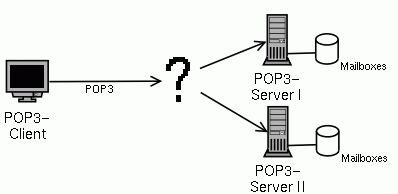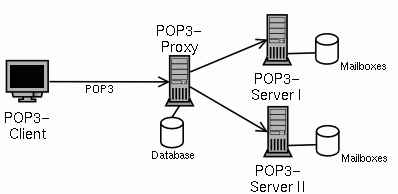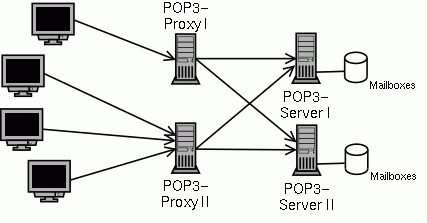Chapter 1. The POPular system architecture
- Table of Contents
- Overview
- The sequence of events in a POP session
Overview
In a small mail system you have one POP3 server that has stored all mailboxes locally on an attached disk. All clients directly connect to this server to access the mail.
This modell works as long as one server can cope with the load. If you have too many mailboxes or too many accesses per mailbox, you want to split the mailboxes over several servers. But now the client has to know to which server to connect.
Telling every client about the new server is probably not feasable every time you add new servers. One possible solution is to put all mailboxes on a NFS server and allow access to all mailboxes from all servers. But this will create a new bottleneck: the NFS server. But there is another solution: Put a proxy server between the client and the server.
The proxy server will accept the connection from the client, get the username and password from the client, authenticate the user and find out on which backend server this users mailbox is located.
For authentication and the mapping of username to server, the proxy needs some kind of database. This database can either be on the proxy server itself or somewhere else on the net.
After the client is authenticated, the proxy will connect to the proper backend server and blindly forward data back and forth between the client and server until one of them closes the connection.
At that point the proxy might develop to be the bottleneck, but there is no reason not to have several proxies. Through DNS round robin or a load balancing server between the client and the proxy, the load will be distributed over all proxies.
The POPular system implements this architecture including the POP proxy and storage server software.



